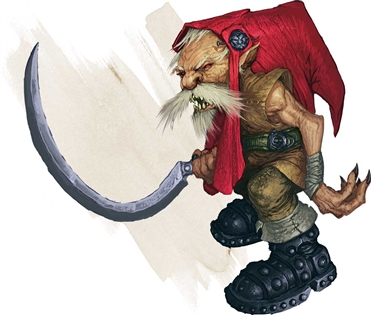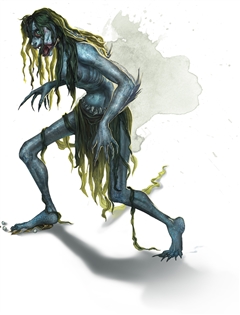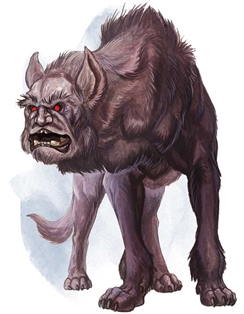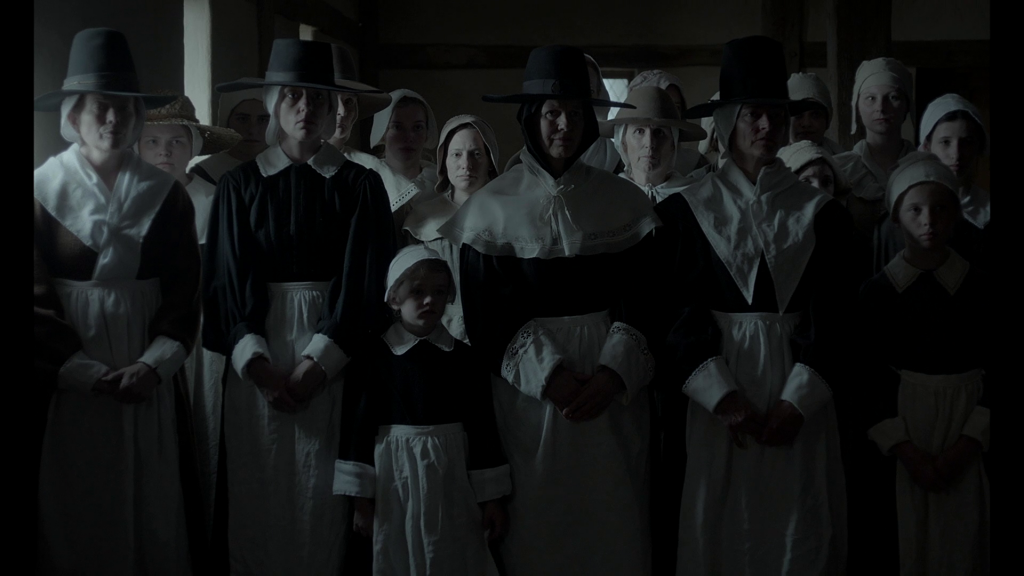Last Updated on January 22, 2023
The creatures and spirits of the Feywild are among some of the most interesting adversaries and allies in all of Dungeons & Dragons 5e.
In this guide, we’re going to take a look at classic monsters like hags, faerie dragons, and blink dogs as well as some lesser-known fey and notes on how to summon them.
We’ve also included some advice for dungeon masters on how to run fey creatures – how they think, feel, and act – as well as how you can fit them into your own game.
Ready? Then let’s step through the faerie ring, into the lethal, enchanting Feywild.

What Is the Feywild?
Deep within the uncharted forest – or perhaps just beyond the borders of a human village or in the corner of your eye – you stumble upon a ring of toadstools.
Or perhaps a glittering, incandescent grotto. Or the sounds of laughter and high, beautiful voices joined in song. Or maybe nothing visible to the naked eye at all.
Step through, and find yourself somewhere unexpected. Getting there is easy – so easy that plenty of folk manage it without trying. Getting back is infinitely more difficult.
The Feywild is a plane that lies parallel to the Prime Material Plane – somewhat like the Shadowfell, it’s a warped reflection of the mundane world.
However, whereas the Shadowfell is a blasted wasteland of death and decay, the Feywild is vibrant, untamed, and colorful – but every bit as dangerous.
The Feywild’s power is fueled by the emotions of the creatures and spirits that dwell there. It’s a tempestuous place, constantly shifting and remaking itself from the raw passion of its inhabitants.
Because it’s technically a mirror plane of the material world, the landscapes of the Feywild may bear at least a passing resemblance to the Prime Material Plane (basically, it’s the Upside Down from Stranger Things, but more garish).
Stepping through a portal to the Feywild, you might look and see landmarks from the plane you just left – trees, hills, even cities, but the similarities are exhausted by even a moment’s inspection.
Forests in the Feywild are taller, older, and untamed by the presence of humans. Vast cities from the material plane may appear in the Feywild only as scattered outposts, ruins, or something even stranger.
The laws of reality are weaker here – secondary to the emotional states of the plane’s most powerful beings.

There’s a lot of this sort of nonsense here.
Traveling in the Feywild is dangerous. Getting home is worse. And that’s all without bumping into one or more of the things that actually live here.
Seelie and Unseelie Fey
Though concepts such as rulership are somewhat relative in Feywild, there are two queens who rule this plane, and most Fey creatures and spirits at least nominally serve one or the other.
Queen Titania and her Summer Court lead the seelie fey, and the Queen of Air and Darkness, ruler of the Gloaming Court, leads the unseelie fey.
“Seelie and unseelie do not directly correlate with good and evil, though many mortals make that mistake. Many seelie fey are good, and many unseelie are evil, but their opposition to each other stems from their queens’ jealous rivalry, not abstract moral concerns.”
– Dungeon Master’s Guide
A Bestiary of Fey Creatures
Fey creatures can be found throughout several D&D 5e adventures, including the recently released Wild Beyond the Witchlight – a campaign set explicitly within the Feywild.
Most of Fey introduced in the WBtW, however, are named NPCs.
Because we’re interested in Fey creatures – monstrous or otherwise – this bestiary gathers together material found mostly in the Monster Manual, Volo’s Guide to Monsters, and Mordenkainen’s Fiendish Folio Volume I.
Annis Hag
Source: Volo’s Guide to Monsters
Large Fey, Chaotic Evil
CR: 6
We kick things off with one of the nastiest hags of all. Annis Hags lair in mountains and stand a full 8 feet tall. They greatly enjoy tormenting the weak, especially children.
They also enjoy disguising themselves as kindly old women to ingratiate themselves to a human child, becoming its confidant and encouraging it to do more and more sociopathic things.
Eventually, the child is cast out of its village, where “Granny” is waiting, knife and fork at the ready.
Bheur Hag
Source: Volo’s Guide to Monsters
Medium Fey, Chaotic Evil
CR: 7
Drawing tons of influence from Scandinavian Night Hags or the Russian legend of Baba Yaga, Bheur Hags are living embodiments of bitter winter cold.
They are attracted to selfish actions justified by deadly cold, such as murdering a traveler for a winter coat or chopping down a dryad’s grove for firewood.
They use their weather magic to torment local villages, fly on broomsticks, and feast on human flesh – to the inescapable horror of all those who bear witness.
Blink Dog
Source: Basic Rules
Medium Fey, Lawful Good
CR: 1/4
Magically teleporting pack hunters, Blink Dogs are often used as guard dogs or trackers by powerful fey. There are few quarries that can outrun a pack of dogs able to blink in and out of existence instantaneously.
Interestingly, Blink Dogs have an innate hatred of Displacer Beasts and will hunt and kill them on sight.
Boggle
Source: Volo’s Guide to Monsters
Small Fey, Typically Chaotic Neutral
CR: 1/8
Strange, oily little monsters, Boggles are the hidden, mischievous stuff of fairy tales. Boggles are created by feelings of loneliness experienced by a creature near a point where the Feywild touches the material plane.
Once manifested, Boggles multiply and gleefully torment all those around them.
The fact that they can fold space around them to create a vast warren inside a 3-inch-thick wall suggests they were inspired by the Nisse – house spirits from Norwegian folklore.
Brigganock
Source: The Wild Beyond the Witchlight
Tiny Fey, Neutral Good
CR: 1/8
Tiny, mouse-like, little Fey creatures that mine the ground beneath the Feywild for wishes (of the mundane birthday cake candle variety, not the 9th level spell), which they work into gems.
These awesome little creatures have souls that float outside their body and serve as minors’ lanterns as well as some interesting localized time-dilation powers.

Darkling
Source: Volo’s Guide to Monsters
Small fey , typically chaotic neutral
CR: 1/2
An ancient race of cursed, traitorous Fey that explode when killed. They often live in small enclaves beneath towns and cities, plying their trade as thieves and assassins.
Dryad
Source: Basic Rules
Medium fey , neutral
CR: 1
Fey spirits strongly linked to trees – sometimes bound to a particular tree as punishment by a more powerful Fey spirit.
Dryads have the power to enchant and befuddle the minds of mortals, teleport between trees, and communicate with beasts and plants.
Eladrin
Source: Mordenkainen’s Tome of Foes
Medium Fey, Chaotic
CR: 10
Emotional and capricious – as kind one moment as they are cruel the next – the Eladrin are Fey Elves that embody the changing seasons, linked to their emotional state and innate magical powers.
You can read our guide to the Eladrin here.
Forlarren
Source: Mordenkainen’s Fiendish Folio Volume I
Medium fey, chaotic neutral
CR: 3
A tragic race of creatures arisen from the union of Fey spirits and devils – bifurcated souls torn between order and chaos. Forlarren are powerful innate spellcasters with a penchant for trickery.
Green Hag
Source: Basic Rules
Medium fey , neutral evil
CR: 3
The archetypical swamp-dwelling, curse-slinging, warty-nosed hag.
They’re capable of breathing both air and water (useful for when the local villagers try drowning them in ponds), mimicking voices, and casting all sorts of illusory magic.
Killmoulis
Source: Mordenkainen’s Fiendish Folio Volume I
Tiny fey, neutral
CR: 0
Small fairie-like creatures with surprisingly powerful gifts.
The Killmoulis’ Blessing of Bountiful Generosity and Curse of Poor Hospitality both have the ability to radically mess with up to eight creatures’ ability to regain hit points by resting.
Korred
Source: Volo’s Guide to Monsters
Small fey , typically chaotic neutral
CR: 7
Secretive, burly creatures covered in hair (which magically transforms into the material used to cut it – they braid strands cut with metal shears into magically animate ropes under their command), Korreds can be found gathered to perform ceremonial dances under the full moon.
Meenlock
Source: Volo’s Guide to Monsters
Small fey, unaligned
CR: 2
Of all the Fey creatures born from intense emotion, Meenlocks are the worst.
These deformed Fey folk are spawned from moments of intense fear, wriggling out of the shadows to torment any living things nearby with telepathically projected visions and an aura of fear.
Pixie
Source: Basic Rules
Tiny fey, neutral good
CR: 1/4
Small, impish – classic faeries prone to mischief and mayhem. Pixies are also my favorite example of why CR is meaningless (or perhaps why Fey are not to be trifled with).
A CR 1/4 creature that can cast polymorph once per day? Come on.
Quickling
Source: Volo’s Guide to Monsters
Tiny fey, typically chaotic evil
CR: 1
Small, supernaturally fast little fey with slender bodies and cold, cruel eyes.
Quicklings are said to be the result of a curse by the Queen of Air and Darkness, lazy folk hexed to forever move at lightning speed, always up to something – rarely anything good.
Redcap
Source: Volo’s Guide to Monsters
Small fey, typically chaotic evil
CR: 3
Small but hellishly strong. Although Redcaps may bear a passing resemblance to a garden gnome, they are bloodlust personified.
Redcaps live for combat, carnage, and solving problems by stomping them to pieces beneath steel-shod boots.

Reflection
Source: Tasha’s Cauldron of Everything
Medium fey, chaotic evil
CR: 1/2
The Fey version of a Shadow, Reflections are two-dimensional, shimmering versions of the creatures that cast them, capable of squeezing through a space an inch wide and draining the Strength from their victims.
Satyr
Source: Basic Rules/Monster Manual
Medium fey, chaotic neutral
CR: 1/2
One of the more commonly found Fey throughout the Feywild, Satyrs are humanoids with goat legs, hooves, and horned heads.
They’re fond of revelry and a raucous good time – craving strong drink and music – but can still hold their own with a weapon. The multiverse’s most functional alcoholics.
Screaming Devilkin
Source: Mordenkainen’s Fiendish Folio Volume I
Small fey, lawful evil
CR: 1
Resembling a small, angry devil cherub – or perhaps a mephit – Screaming Devilkin are fiend-tainted Fey born from emotions of intense panic, which they then live to spread.
They are agile fliers that, as their name suggests, emit magically painful screams ceaselessly.
Sea Hag
Source: Basic Rules
Medium fey, chaotic evil
CR: 2
Technically the weakest of the hags, the Sea Hag is nevertheless a deadly opponent.
Sea Hags are mistresses of disguise, only revealing their horrifying true forms at the moment when it has the opportunity to make the largest number of onlookers vomit or become transfixed by her Death Glare.

Sprite
Source: Basic Rules
Tiny fey, neutral good
CR: 1/4
Aggressive, hardy warriors that scarcely match their iridescent dragonfly wings and delicate features. Sprites protect forests and portals to the Feywild and can keenly sense when good or evil creatures are near.
Like most Fey, they can make themselves invisible if they choose, but unlike other Fey who favor spellcasting, they prefer to defeat their enemies with sword and spear.
Yeth Hound
Source: Volo’s Guide to Monsters
Large fey, neutral evil
CR: 4
Somewhere between a Blink Dog and a Hellhound, Yeth Hounds are often granted as gifts to powerful evil beings by powerful Fey. These large beasts have vaguely humanoid faces inset with glowing red eyes.
Yeth Hounds always hunt at night as sunlight has the power to banish them back to the Feywild.

Conjure Fey – Which Options Are Best for This Spell?
Druids and Warlocks have the power to reach into the Feywild and temporarily bind a Fey spirit temporarily in their service.
Conjure Fey
Casting Time: 1 minute (concentration)
School: Conjuration
Damage/Effect: Summoning
Range: 90 feet
Class: Druid, Warlock
Attack/Save: None
Duration: 1 Hour
Level: 6th
Components: Verbal, Somatic
When you cast this spell, you summon either a Fey creature or a Fey spirit in the form of a beast. The summoned creature or form the Fey creature takes must by CR 6 or lower.
The summoned entity appears in an unoccupied space within range that the caster can see. If the summoned creature drops to 0 hit points or the spell ends, it disappears.
The summoned Fey is friendly to you and your allies, obeying your verbal commands as long as those commands don’t violate its alignment. If you don’t command the Fey, it defends itself but otherwise doesn’t act.
The summoned Fey doesn’t disappear if the caster’s concentration is broken, but their control over the creature ends, and it becomes immediately hostile to the caster.
An uncontrolled Fey cannot be dismissed by the caster and disappears at the end of the spell’s duration.
At Higher Levels. When you cast this spell using a spell slot of 7th level or higher, the challenge rating increases by 1 for each slot level above 6th.
Example Creatures
There are very few other spells (Summon Greater Demon, maybe) that give you access to such a diverse and dangerous roster of summonable creatures.
While it can be tempting to read “summon any creature or Fey spirit in the shape of a beast up to CR 6” as “summon a CR 6 monster,” the innate magical powers possessed by many lower CR Fey make a whole bunch of them great options in or out of combat.
All Hags, for example, have access to a suite of illusion magic, and some (like the CR 6 Annis Hag) are fearsome combatants as well as infiltrators.
Even Pixies – a CR 1/4 spirit – can cast confusion, dancing lights, detect evil and good, detect thoughts, dispel magic, entangle, fly, phantasmal force, polymorph, and sleep once per day.
Basically, you get to add a highly versatile, 4th- or 5th-level wizard to your team for an hour.
Also, the benefit of summoning a lower-level Fey is that, if your concentration is broken, you don’t have to deal with something as troublesome as a Mammoth or even a T-Rex in addition to whatever it was you were already fighting.
The Four Coolest Fey Creatures To Include in Your DnD 5e Game
Whether you’re a player looking for something to summon or a dungeon master looking to incorporate some Fey into your campaign, here are some of our favorites.
Hags
As varied as they are nasty, hags of all kinds make fantastic antagonists or even morally gray patrons for adventuring parties.
Hags can charm, deceive, or just straight up murder things that are far more powerful than they are on paper.
Even a CR 2 Sea Hag is a fearsome opponent, capable of causing trouble for a higher-level party.
While not hugely powerful offensive spellcasters, Hags are all experts at manipulating their environments and the minds of mortals.
Summon a Hag outside the lair of an enemy you want dead (especially a Green Hag that has an especially effective form of invisibility) and set them loose.
Hags’ illusory appearance is a particularly effective way of “suddenly” being accompanied by a figure of authority the next time you’re trying to gain access to somewhere off limits.
As a dungeon master, a hag can make a great miniboss for an adventure – prone as they are to tormenting villages or stealing away children for use in unholy rituals.
Anyone who’s seen The VVitch by Robert Eggers (if you haven’t and are a fan of seriously creepy folk horror, you should) will have an idea of just how terrifying an opponent a hag can be.

Shapeshifters, illusionists – hags never fight fair. They’ll turn the villagers’ suspicions against the party, recruit local monsters, and flee from a stand-up fight.
If your players like tackling problems head-on, a hag presents a slippery, frustrating challenge they need to approach laterally.
Blink Dogs and Yeth Hounds
Fearsome pack hunters, roaming free in the forests of the Feywild or in service to some great lord or lady of the hunt – or perhaps a foul tyrant who uses their pack to torment and terrorize the local peasantry.

Blink Dogs are the perfect loyal servants of elven royalty, Fey nobles, and other warriors in tune with nature.
You could find a pack guarding a gateway to the Feywild, or a druid’s sacred grove. Their ability to teleport makes them hard to escape and predict.
Yeth Hounds are pure nightmare fuel. Their vaguely human faces, an aura that induces the frightened condition, and ability to receive telepathic commands from their master makes these CR 4 creatures the perfect weapon in the arsenal of any villain.
A dungeon master looking to inject a little horror into their game – perhaps in search of something to terrify a party that’s fought their share of ghouls, ghosts, and undead – could do worse than using a pack of Yeth Hounds.
Redcaps
Easily only of my favorite Fey monsters. While Redcaps are clearly inspired by the rosy-cheeked gnomes found in country gardens, in D&D 5e, they’re rabid, bloodthirsty little monsters. Think piranhas in pointy hats.

Just as Meenlocks stem from episodes of intense sadness, Redcaps are the result of unrestrained violence and bloodshed.
If a sentient creature acts on an intense desire for bloodshed, one or more redcaps might appear where the blood of a slain person soaks the ground.
From the moment it awakens, a redcap desires only murder and carnage, and it sets out to satisfy these cravings with a lack of subtlety that’s rather uncharacteristic of most Fey.
If you’re looking to cast Conjure Fey, throwing a Redcap into any situation is sure to spell carnage and mayhem, whether they’re under your control or not.
If you’re a dungeon master, a town infested with Redcaps is a great adventure that blends pure Gremlins-esque chaos with a mystery: what act of violence caused these creatures to appear?
DM Advice: Running Fey Creatures and Adventuring in the Feywild
The Feywild was first introduced to D&D in the Manual of the Planes – a supplement for 4e.
This realm of magic and chaos is seen as the spiritual successor to the Plane of Faerie featured in the 3e version of the Manual of the Planes.
D&D is a game that’s happy to steal wholesale from any and all mythologies it thinks are cool.
The Feywild and the Fey that dwell within it are a perfect example – many of them pulled right from English, German, and Scandinavian folk tales.
These are not Walt Disney’s tinkerbells; Fey creatures are, above all else, alien. Their view of petty concerns like morality and the value of humanoid life are utterly other to our own.
Fey delight in what appear to be cruel games where the rules change unexpectedly and unfairly. In reality, they’re just playing with a set or rules we can’t understand.
They’re just as likely to invite you to sit down for a sumptuous meal with them one moment as they are to hunt you for sport the next.
As a dungeon master looking to put Fey into their games, you should lean heavily on this otherness. Just remember: Fey may not care about right and wrong, but they care about bargains and contracts.
They may try to twist the words, willfully misunderstand the terms, and turn every situation into a Monkey’s Paw, but if you can bind a Fey (much like a fiend) within an ironclad agreement, they will not allow themselves to go back on it.
This makes for some great uneasy alliances, Fey patrons looking to fulfil or escape ancient contracts, and adventures based around the forces of evil wielding a powerful Fey spirit like a weapon – or featuring age-old bargains between the mortal world and the Fey folk come to collect on their half of the agreement, perhaps generations later.
However you decide to use Fey in your games – as villains, allies, or summoned help – hopefully this guide has helped set you on the right course.
As always, happy adventuring.
I played my first tabletop RPG (Pathfinder 1e, specifically) in college. I rocked up late to the first session with an unread rulebook and a human bard called Nick Jugger. It was a rocky start but I had a blast and now, the better part of a decade later, I play, write, and write about tabletop RPGs (mostly 5e, but also PBtA, Forged in the Dark and OSR) games for a living, which is wild.
